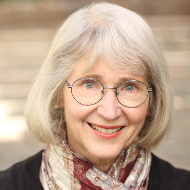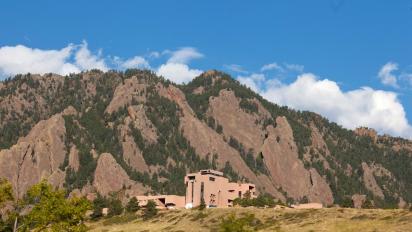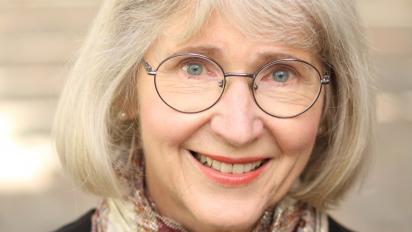At both of those meetings, Weinberg argued that the decentralized nature of American education required a grassroots approach such as the Committees of Correspondence. But, Weinberg and Moyer contended, they would need not only expansion but also coordination beyond what NABT and Weinberg himself could provide. Thus it was agreed to found a national organization. A pivotal meeting was held at the AAAS meeting in January 1982 to discuss the structure of such an organization. Work began immediately to draw up documents and form a board for what would be called the National Center for Science Education. NCSE was incorporated and attained status as a 501(c)3 nonprofit in 1983; Weinberg set about raising money; and finally, in November 1986, there was enough money to hire the first executive director of NCSE.
That would be me.
Almost immediately, in 1987, NCSE became involved, albeit in a minor way, in a federal district court case, Webster v. New Lenox School District. NCSE would later play a role in a number of court cases involving evolution education: Peloza v. Capistrano USD, LeVake v. ISD 656, Selman v. Cobb County, Hurst v. Newman, and, of course, Kitzmiller v. Dover, in which NCSE advised the plaintiffs’ legal team and recruited its expert witnesses.
Perhaps NCSE’s most important role during the early decades was advising parents, teachers, and other citizens trying to oppose policies that compromised the integrity of science education in their local schools. Most of the help was behind the scenes. Probably the first major “flare-up” (as they are known in-house) was the controversy over a creationism policy in Vista, California. But the longest-lasting flare-up, from 1998 to 2005, was the Kansas “evolution wars,” during which NCSE worked closely with Kansas Citizens for Science — a descendent of a Committee of Correspondence — to reverse a series of creationist-friendly revisions to the state science standards.
NCSE was — and remains — the clearinghouse for information on the creationism/evolution controversy. Teachers struggling against pressure to include creationism or exclude evolution, parents concerned about efforts to compromise the teaching of science, reporters trying to write stories on a hot subject they knew little about — all have learned that at NCSE they could find information on all aspects of the issue: scientific, pedagogical, religious, and legal. NCSE worked closely with teachers to help them teach evolution more effectively.
But although resisting the creationist threat was the impetus for NCSE, the organization was intended from the beginning to be more than — as one of our opponents snidely suggested — “the National Center for Selling Evolution.” The name was chosen because it would allow the opportunity to address other science education issues after the creationism issue dissipated. Well, that didn’t happen, but nevertheless NCSE branched out to helping teachers and other citizens resist not only anti-evolutionism but also efforts to compromise the teaching of climate change, and science denial in general. From the beginning, NCSE sought to educate the public through improving the teaching of science and of science as a way of knowing.
That history reverberates today through NCSE. As the website proclaims:
I have been delighted to see how NCSE has thrived and expanded since I retired in 2014. The Supporting Teachers program has blossomed through the Teacher Ambassador initiative, the production of high-quality classroom materials, and other efforts that improve the teaching of science. Recently, with so much misinformation on COVID-19 circulating, it was good to see NCSE’s series explaining the relevant science — it helps that Executive Director Ann Reid spent a decade studying the 1918 influenza pandemic! The monitoring of anti-science efforts continues, and NCSE remains ready to advise and provide accurate information about the various forms of science denialism that continue to swirl around us. And I have been excited to see NCSE conducting its own research in the last few years: helping us understand what teachers know, what they’re doing, and what they need to do better.
Forty years from now, what will NCSE be doing? I used to joke with staff that all nonprofits are attempting to work themselves out of existence: if the nonprofit succeeds, the problem is solved — the naked are clothed, the hungry are fed, peace and justice are proclaimed, or (in NCSE’s case) science education is perfect. And then I’d joke that they shouldn’t worry. So keep on supporting NCSE for the next 40 years as this fine organization continues to work hard to improve science education — because everyone deserves to engage with the evidence.
I’m very proud to have worked there.
This version might differ slightly from the print publication.







